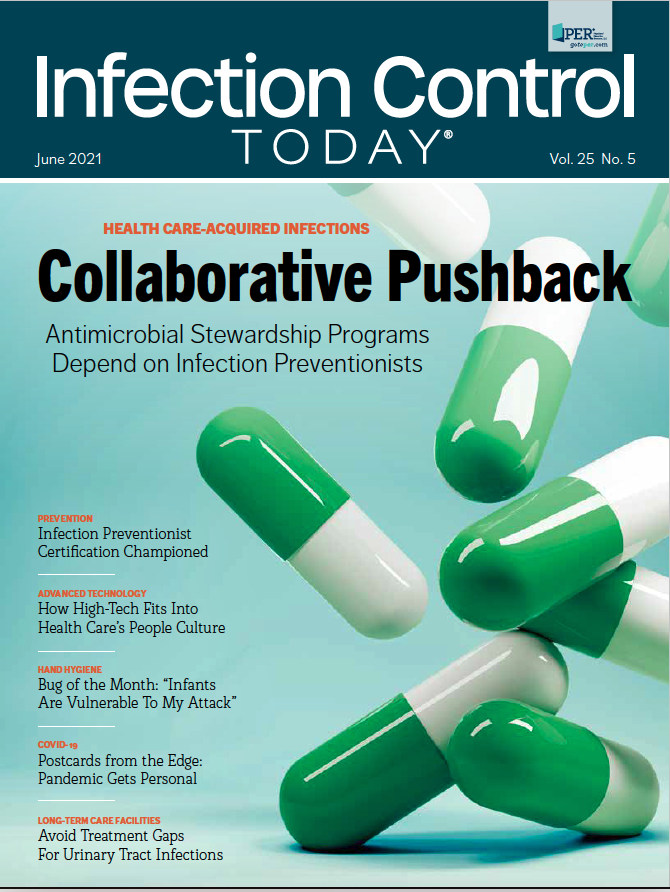Disinfected Hands, Nonsterile Gloves Show Equal Viral Loads
Hospital employees performed hand hygiene under the gaze of infection preventionists, and the study data were gathered during the COVID-19 pandemic.
The purpose of studies is to prove hypotheses or to disprove them or—and this is frequently the case—to move the subject matter into that bulging folder marked “more studies needed.” In studies that include some context, that context can be crucial, as was the case in a recent study conducted by investigators at the Department of Hospital Hygiene at Klinikum Stuttgart in Germany. They compared the viral loads of health care workers (HCWs) after they disinfected their hands to the viral loads found on nonsterile gloves (NSGs) when a worker pulled those gloves out of a box and put them on. The investigators found no difference.
But here’s the context.
HCWs performed hand hygiene (HH) under the gaze of an infection preventionist (IP)—in many instances, the IP was a participant. The study data were gathered during the COVID-19 pandemic, when hand hygiene was very much on the minds of not only HCWs but everybody else in the world.
The bottom line is: “Microbial loads of hands after HH are comparable to NSG,” state the authors of the study, the results of which were published in the American Journal of Infection Control.1 “Filling level or position of the glove box did not influence glove contamination. Whether similar microbial counts translate into comparable nosocomial infection rates warrants further research.”
Most of the participants involved in the study were nurses, and investigators gathered data from between May 19 and October 20, 2020, from 71 hospital wards. They collected 185 samples from NSGs and 107 samples from the hands of HCWs.
“HCWs were requested to sanitize their hands with alcoholic hand rub containing 75% isopropyl alcohol, like they would do during routine practice,” the study results state. “No prior instruction or training was performed. The fingertips of the dominant hand of the HCW were then pressed for 3-5 seconds on blood and MacConkey agar plates.”
To sample the gloves, an IP performed hand hygiene with an alcohol-based hand rub. When their hands were dry, the IP grabbed an NSG from a randomly chosen box in the ward. For both hand hygiene and NSG testing, the investigators obtained fingerprints from the dominant hands of the HCW.
“The median CFU [colony forming units] per plate was the same for NSG (median 1, interquartile range [IQR] 2) and hands after HH (median 1, IQR 5),” say the study authors. “A Mann-Whitney U test indicated no statistically significant difference between groups, U = 9267,
z = –0.965, P-value = .33. No growth of microbes was detected in 88 samples (47.6%) from NSG and in 52 samples (48.6%) from hands. In 1 sample from NSG there was growth of Enterobacteriaceae, 1 showed Acinetobacter lwoffii, and 8 samples grew mold.”
Investigators admit they did not find what they had been seeking.
“With our study, we are ultimately not answering the question whether the comparable microbial counts between hands after HH and NSG translate to a similar nosocomial infection rate,” the authors state. “A limitation of our study is that we only looked [at] contamination of NSG in comparison to hands after HH, but not the rate of cross-contamination or nosocomial infections. Microbial loads on NSG are similar, but if they lead to a lower [adherence] with HH, they even might be detrimental.”
Reference:
- Paul G, Bobic R, Dawud J, et al. Bacterial contamination of nonsterile gloves versus hands after hand hygiene. Am J Infect Control. Published online April 18, 2021. Accessed April 25, 2021. doi:10.1016/j.ajic.2021.04.002

Robust infectious disease surveillance, including rapid subtyping of influenza A, is essential for early detection, containment, and public health reporting of novel viral threats.
Robust infectious disease surveillance, including rapid subtyping of influenza A, is essential for early detection, containment, and public health reporting of novel viral threats.
2 Commerce Drive
Cranbury, NJ 08512